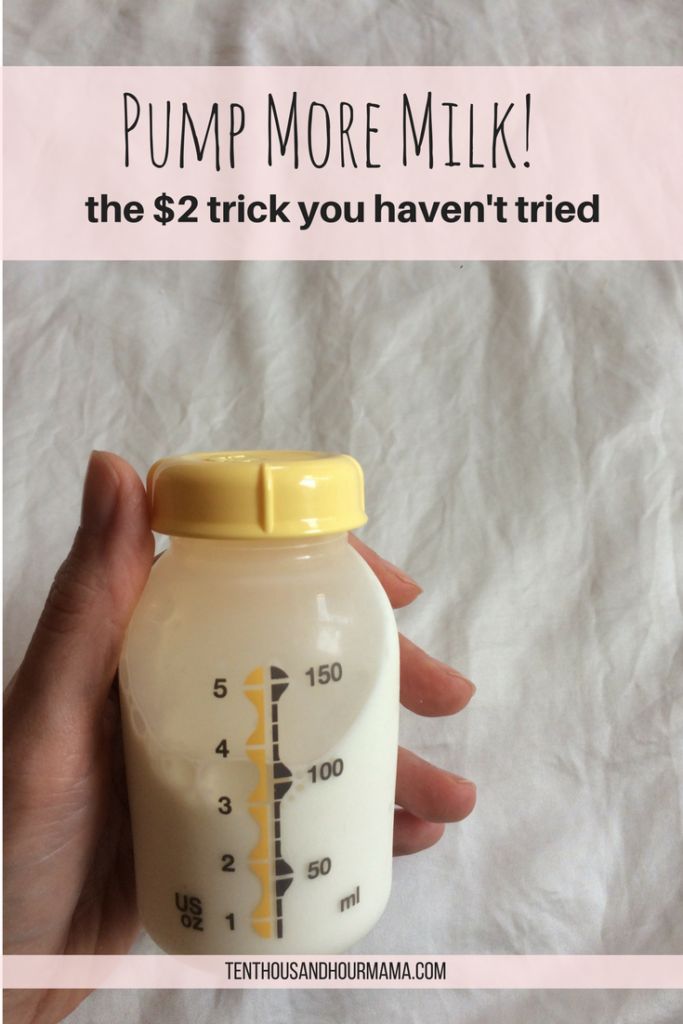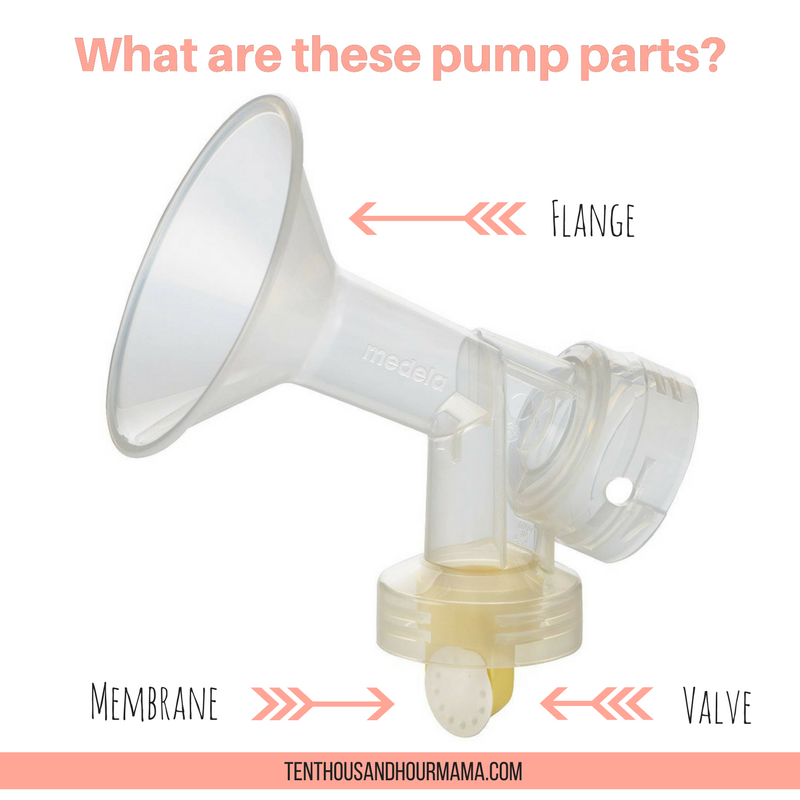A dear friend of mine (whom I’ll not name so I don’t embarrass her) recently texted me. She was at work on a short break and was pumping milk for her baby at home. Not only that—she was catching up on emails, sending me pics of her munchkin and blow drying her hair (which she’d left in a wet bun until now). I couldn’t believe all her multitasking while pumping at work. Wow, she is a supermom! I thought.
As her need to do so much during such a short time shows, pumping at work is not easy. Plus, many moms feel a lot of pressure to make enough milk for their babies while they are at work. So it’s no surprise that nearly every pumping mom I know has, at some point, wanted to pump more milk.

When tricks to increase your milk supply don’t work
The more a mom pumps, the more at risk she is of decreasing her milk supply. That’s because a breast pump typically isn’t as efficient at getting milk out as a baby is. (Makes sense, right?) That can affect the supply and demand cycle that dictates how much milk you make.
We moms are a savvy bunch. When we want to pump more milk, we go online and do oodles of research. We eat oatmeal and bake lactation cookies and take supplements.
But what happens when these attempts to increase your supply doesn’t help you pump more milk?
Well, you can supplement with formula. If your baby is old enough and you have your pediatrician’s go-ahead, you can increase solids. You can make up the difference by offering your baby lots and lots of boob when you are together.
Or you can try this simple, cheap solution to pump more milk that too many of us forget.
Change your breast pump’s membranes to pump more milk
When I was a breastfeeding and pumping newbie all those years ago, I had pretty much no idea how to use my breast pump. I didn’t know what all the parts did, and the pump seemed overly complicated.
No wonder, then, that I didn’t know what to do with those small, white flaps that go on the valves—the membranes.

These membranes, though, are what create the suction that makes the pump work. When the pump sucks air in, a membrane that makes a complete seal over the valve is working: It creates suction that allows the pump to pull your nipple, simulating what a baby does when she is breastfeeding. And the membrane relaxes, letting the pumped milk dribble into the bottle, when the pump takes a “break” from its suction. That’s how your breast pump works!
If, however, the membrane isn’t making a complete seal, the suction is weaker or nonexistent. (It’s like when you drink out of a straw: If your lips didn’t go all around the straw, you have a lot harder time pulling up the liquid.)
Membranes wear out. They might warp a little bit in the dishwasher or become loosened when you’re fiddling with your pump parts.
Good thing it’s so easy to replace your pump membranes!

For a couple of bucks, you can buy spare membranes. Just pull off the old ones and stick the new ones on. They should lay flat against the valve with no gaps.
Then, when you pump again, you may notice a difference—a very good difference! You might see that you don’t have to turn the pump as high to get the right amount of suction, and the pump should be more efficient at getting out breast milk—meaning you will pump more milk!
Success!
Keep it up, Mama. You’re doing great!
PS – If you’re a pumping mama, you may want to read my post about ready-made comebacks for awkward coworker questions.
This post contains affiliate links, which means if you click and buy, I may receive a small commission.

Yep, it’s super important to check the membranes. I lost my milk supply with my first daughter because tiny holes had developed at the attachment points and I didn’t realize it for a long time. Holding the membrane up to the light and moving the flat part away from the attachment “nub” revealed the holes. I always tell new moms to inspect the membranes regularly!
That’s so frustrating and heartbreaking. It’s one thing when you finish pumping/nursing by your own decision, and quite another to have the decision forced on you because of low supply. I’m so glad you’re sharing your wisdom with other moms!
oh pumping, it can sure be the pits, especially when you almost exclusively pump like i did -due to a posterior tongue tie from my LO. to get my supply back up, I gave her her usual bottle of pumped milk and let her top-off via nursing afterwards every night, even if just for a few minutes. those few minutes of nursing combined with pumping afterwards helped to increase my output and have been able to maintain a supply to match her demand. as far as parts, I replaced them after 4 months and have a spare set to use while the other is washing/drying -talk about making life easier!
Oh man, anything to make your pumping life easier is crucial. That’s such a great idea to have several sets of parts so you don’t have to wait for one to dry. What a smart tip!
Awesome reminder! When I was pumping, I don’t think I realized what a difference that could make until I was almost done nursing and pumping at work. You’re such a great resource for new moms!
Thank you Marlynn! I wish I’d known about this earlier, too. I hope it helps someone else!
Good to know! The science behind breastfeeding (and associated skills, sounds like) is so complex, our bodies are amazing!
Agreed! I continue to marvel that the human body can create, nurture and sustain a small person—as she turns into a big person!
What a great tip – I’m sure that there are many mama’s out there that had no idea you could even do this!
I didn’t for too long! I hope it helps some other moms.
Great tips for pumping moms!
I would have never known any of this. I didn’t breastfeed, but such a great tips for those breastfeeding mommas.
Crystal recently posted…Fighting The Good Fight: Combating ADHD In Families (Guest Post: Emma Kelley)
So simple, and yet I’m sure many moms don’t know about this! A friend of mine is currently having supply problems, and I’m sure your post — the URL of which I shared with her! — will come in super handy. Thank you!!!
As a mom who bottle nursed my DD for over a year I am here to say pumping more does NOT decrease supply or take away how much you will have later. The opposite is true. Your breasts are a supply and demand type business. If you empty them, they will produce more. The less you pump or nurse, the Fuller they are the more it will tell yourbody baby doesn’t need that milk. I was very fortunate and at my peak able to pump 40 -50 oz a day for my girl. Yes the membranes are insanely important, however keep the girls empty if you want to produce more.
You are so right! I struggled with the concept mentally, but pumping does signal that your baby wants more, so your breasts should produce more milk. Thanks for sharing your experience!